Hole in the Clouds
Apr 18, 2011
 That's my sister's boot toe and walking stick probing for the next step as she prepares to work her way down a mountainside in Nepal.
That's my sister's boot toe and walking stick probing for the next step as she prepares to work her way down a mountainside in Nepal.
Nepali trekking trails, at least in the vegetated, more or less inhabited zones of the Himalayas, are mostly paved with stones, and the steep stretches are fashioned into endless rocky staircases. Donkeys can climb the staircases with ease, as can most Nepalis and probably even fit young Americans.
Building the staircases was part of the terracing project that has occupied Nepalese farmers for centuries. Rocks were pried up out of the soil and redeployed into retaining walls for thousands of tiny terraces, holding back the hillsides so that plows pulled by buffalo could work the land. Over the generations, as plows and hoes and hoofs and toes have continued to kick up rocks, farmers have built themselves stone houses and connected the houses to their fields with steep, stone-paved, stone-staircased trails.
Terraces and paved trails minimize soil erosion on steep slopes. Also, if the stones are cobbled together into stairsteps along the steepest stretches, the trails can head straight up and down without switchbacks, thus facilitating travel while minimizing the amount of land removed from cultivation.
On the other hand, straight up and down the stairs is . . . well, one elderly Nepali, who was scampering up the trail as we were struggling down, paused briefly to bless our knees.
One of the staircases we struggled up was said to contain more than 8,000 steps. My sister kept count, but irregularities in the size and shape of the steps led to uncertainty as to the exact number.
Every million billion steps or so there is a rest area, also built of stone, backed up by a stone wall with a low shelf. The shelf isn't actually low enough for sitting on, but it's about the right height for resting a backpack or other burden.
Below are three more pictures of stair-stepping in the Himalayas. The terraced fields look brown and barren, not because they have been abandoned but because we were traveling early in the springtime, before most crops had sprouted.
The last picture shows a rest stop in a village, with a trail that climbs onward and upward via the staircase at the extreme right of the scene.
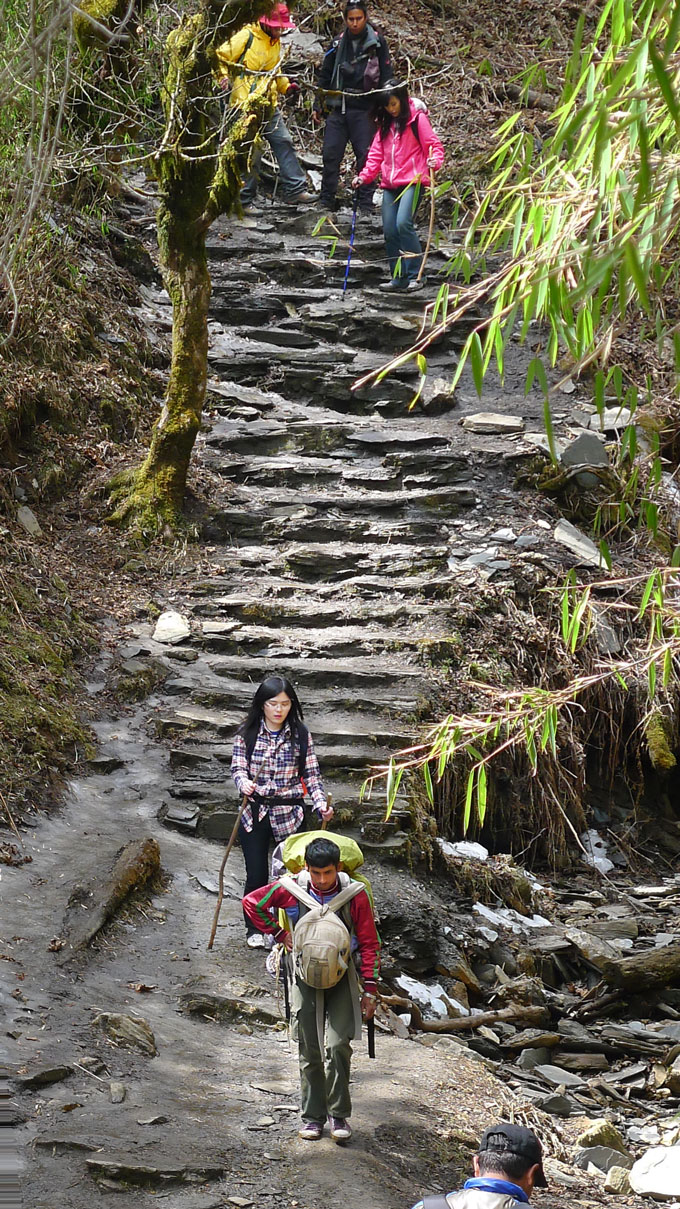
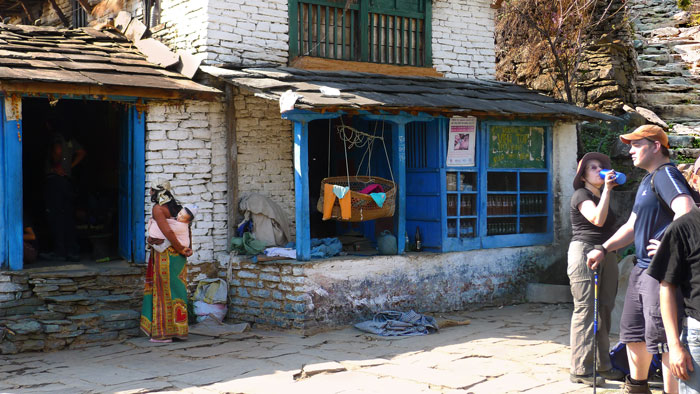
landscape
Nepal
trekking
Carol F.
terraced fields
steps
woods
trail
Binaye
Sandip
Jun 19, 2014
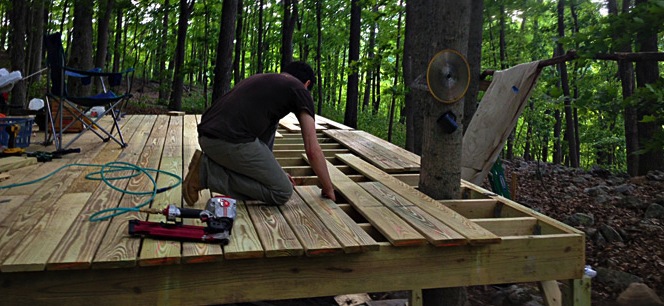 Ted lines up the decking for the new deck he's building behind his house high on the mountain near Berkeley Springs, West Virginia. "There is a big hickory and a skinny maple growing through the deck," he notes. "I still haven't done the railing. Sigh."
Ted lines up the decking for the new deck he's building behind his house high on the mountain near Berkeley Springs, West Virginia. "There is a big hickory and a skinny maple growing through the deck," he notes. "I still haven't done the railing. Sigh."
West Virginia
Ted
work
construction
woods
deck
Berkeley Springs
Mar 1, 2015
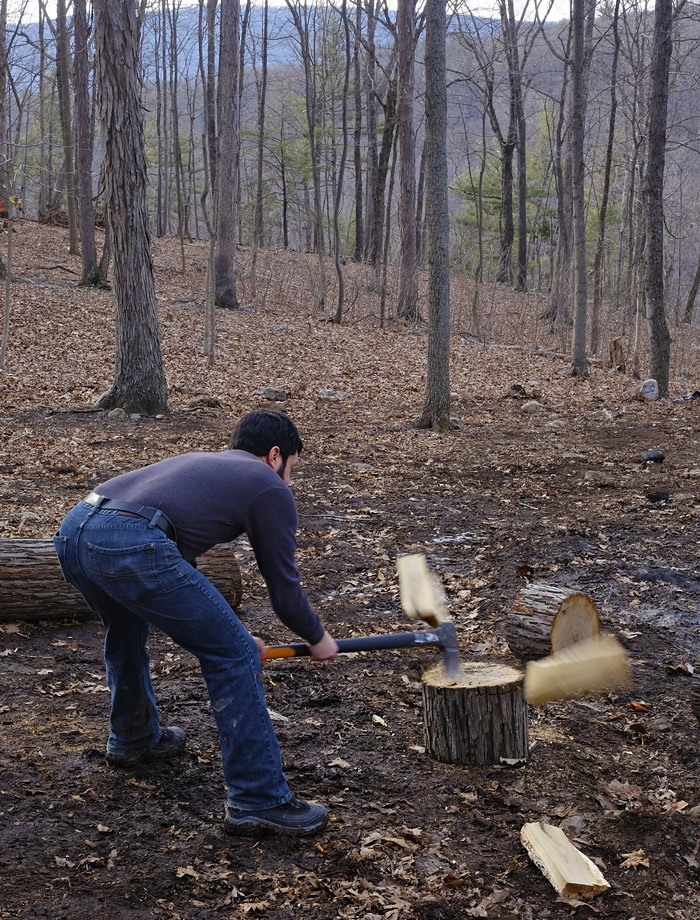 Up in Tedland, high on the mountain above the Cacapon River, to get warm at all, you have to get warm twice. Or else wait till June and get all the warm you want, and then some.
Up in Tedland, high on the mountain above the Cacapon River, to get warm at all, you have to get warm twice. Or else wait till June and get all the warm you want, and then some.
mountains
West Virginia
Ted
work
woods
Great Cacapon
(Image credit: Fuji T)
Feb 27, 2016
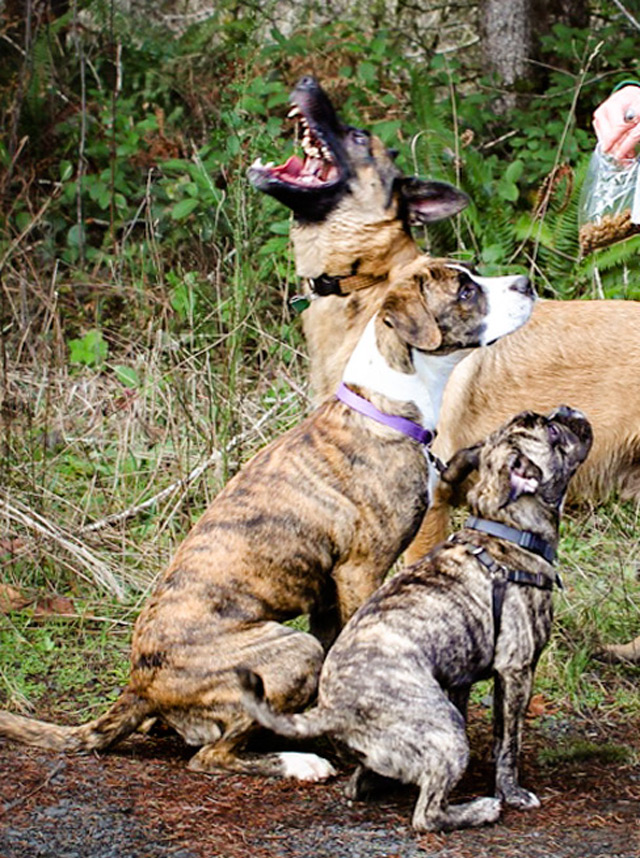
There are two good dogs here, who are paying attention and no doubt salivating over the treats in that plastic bag. But the guy in the back, a young Belgian malinois named Boulder, still needs to get with the program.
woods
dogs
pets
obedience
tricks
(Image credit: Hank Stein)
Apr 1, 2016
 We have a new dog in the family, Hank's shaggy pup Mabel. She's a cross between an Australian Shepherd–which is actually an American breed with no connection to Australia–and an Australian Cattle Dog–which is actually an Australian cattle dog. The two breeds are often crossed to produce a kind of sturdy, active, people-oriented working dog that's sometimes called a Texas Heeler.
We have a new dog in the family, Hank's shaggy pup Mabel. She's a cross between an Australian Shepherd–which is actually an American breed with no connection to Australia–and an Australian Cattle Dog–which is actually an Australian cattle dog. The two breeds are often crossed to produce a kind of sturdy, active, people-oriented working dog that's sometimes called a Texas Heeler.
Hank tells us that Mabel, who's seven months old, is the world's smartest dog. She's smart enough, obviously, to know when she's got a good thing going.
landscape
dog
woods
rainforest
pet
Mabel
Australian Shepherd
Australian Cattle Dog
Texas Heeler
(Image credit: Hank Stein)
Apr 17, 2016
 With this picture we begin a very occasional series exploring the latter-day habitats of the five Stein boys, who all long ago sheltered under one roof in Tuscaloosa, Alabama, but who have now scattered to the far corners of the realm.
With this picture we begin a very occasional series exploring the latter-day habitats of the five Stein boys, who all long ago sheltered under one roof in Tuscaloosa, Alabama, but who have now scattered to the far corners of the realm.
Ted has built himself a homeplace high on a hill above Great Cacapon, West Virginia. About a year ago, a friend from Alabama, Tommy Roberts, drove up to Ted's land hauling his tools and a trailer full of old shipping pallets. Pieces of pallets eventually became siding shingles to sheath the house and outbuildings–but first, Tommy and Ted had to build the house, drill the well, install the woodstove for heat and the gas stove for cooking, run electricity in from the pole by the road, and etc. and etc.
The stone wall and outdoor fireplace were built with rocks from around Ted's land; the presence of all the loose rocks was a good sign, according to the neighbors, proving that his property included a goodly amount of flat land for loose rocks to settle on. Ted recently expanded his place by buying more acreage across the road, so he's now got a little guesthouse, and of course if he happens to ever need even more rocks . . . .
Ted builds software for a living, and the wireless in the woods above Great Cacapon is slow. Even so, it's fast enough for government work, as the saying goes, and lately, most of Ted's work has been government work. He can write code in Tedland or discuss work with colleagues or clients, in the house or on the deck or in a hammock under the trees. But every now and then he has to leave his mountainside and drive to Washington to make sure all is well with NASA or the State Department or USGS or whomever; for such occasions, he has rented a room in town.
When he's off the mountain, he probably has to make arrangements for somebody to look after his chickens.
house
West Virginia
woods
stone
Great Cacapon
Cacapon River
wheelbarrow
(Image credit: Ted Stein)
 That's my sister's boot toe and walking stick probing for the next step as she prepares to work her way down a mountainside in Nepal.
That's my sister's boot toe and walking stick probing for the next step as she prepares to work her way down a mountainside in Nepal.






